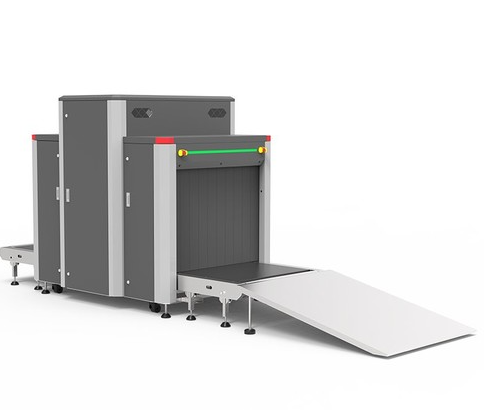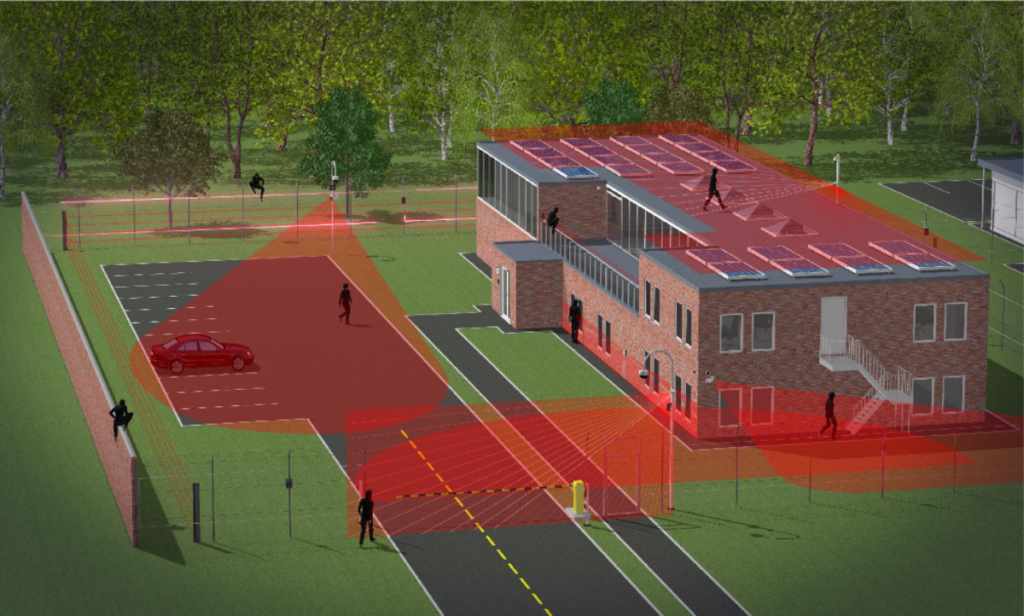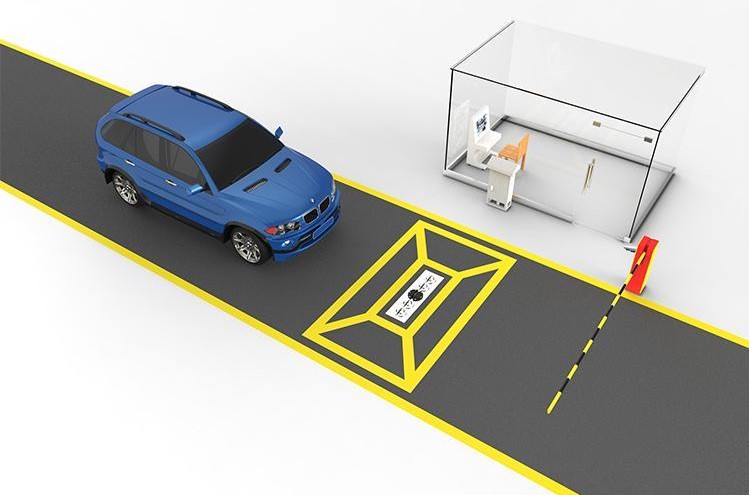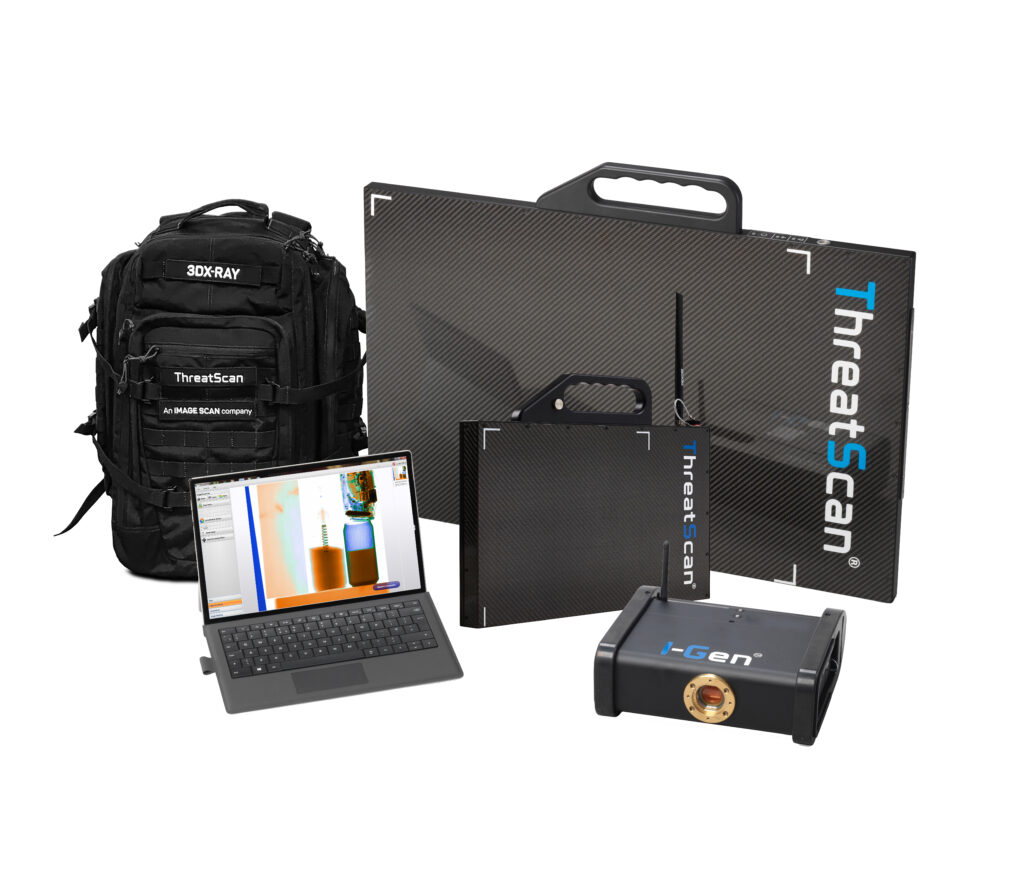Products
Security Systems

1
Personal Inspection System
This system provides the ability to detect concealed metals and accurately identify their locations, enhancing security to the highest international standards. This system relies on an innovative multi-zone design to achieve maximum precision and efficiency.

2
X-Ray Inspection System
X-ray Inspection System is a technology used to examine individuals or objects to detect unwanted or prohibited materials. This technology relies on generating X-rays and directing them towards the body or object being examined, allowing the inspection equipment to receive an internal image of the subject. These images are analyzed to determine if there are any foreign or prohibited materials hidden within the inspected objects. This technology is widely used in areas such as public security in airports and ports, customs inspection, nuclear medicine, baggage screening in government and commercial buildings, and many other applications.

3
External building protection and intrusion prevention systems
External building protection and intrusion prevention systems are a set of technologies and measures aimed at securing and protecting buildings and facilities from external threats and intrusion attempts. These technologies include several elements, such as:
- Barrier and Fences Systems: These systems involve the use of strong fences and effective barriers to restrict and prevent unauthorized individuals from entering the building or facility.
- External Lighting Systems: These aim to illuminate the exterior perimeter of the building in a way that prevents hiding and reduces the chances of intrusion in the dark.
- Surveillance Cameras and Monitoring Systems: Used to monitor activities outside the building and record incidents and unauthorized attempts. They can be equipped with facial and motion recognition technologies to increase their efficiency.
- Early Warning Systems: These systems rely on detecting unauthorized attempts to approach the building and immediately alert the relevant authorities to take necessary measures.
- Environmental Design and Landscaping: Buildings and facilities can be designed in ways that reduce the chances of intrusion, such as using thorny plants, surrounding natural terrain, and trees to restrict unauthorized access.
By using these systems and measures in an integrated manner, the security of buildings and facilities can be enhanced, reducing the chances of potential intrusions and external threats.

4
The UVSS
The Under-Vehicle Surveillance System (UVSS) is a security technology used to inspect the underside of vehicles for security purposes. It typically consists of a set of cameras, lighting systems, and specialized imaging software designed to capture and analyze images of the underside of vehicles as they pass over a specially designed inspection area.
The UVSS is primarily used at security checkpoints in places such as airports, military installations, government buildings, border checkpoints, and high-security facilities. As a vehicle passes over the UVSS inspection area, cameras usually capture high-resolution images of the vehicle’s underside from various angles. These images are then processed and displayed on a monitoring screen, where security personnel can examine them for any anomalies or suspicious objects attached to the vehicle.
The UVSS helps identify potential threats such as hidden explosives, weapons, or contraband that may be concealed under vehicles. By providing a thorough and detailed inspection of the vehicle’s underside, the UVSS enhances security measures and aids in preventing unauthorized items from entering secure areas.

5
Explosion Detection System
An explosive detection system is a technological setup designed to detect the presence of explosive materials in the surrounding environment, whether on individuals, in places, or on objects. The aim of this system is to provide safety and protection against terrorist threats and crimes related to explosives.
The explosive detection system typically consists of a variety of devices and technologies, including:
- Handheld Detectors: These include manual detection devices used by security and police personnel to inspect individuals, bags, and vehicles through manual scanning.
- Fixed Detectors: These are stationary detection devices installed in vital locations such as airports, stations, and government buildings to detect explosives when individuals or goods enter.
- Portable Detectors: These include mobile detection devices used by security teams to inspect sites, vehicles, or goods on the move.
- X-ray Detection Devices: These rely on X-ray technology to inspect items, bags, and vehicles to detect suspicious materials inside them.
- Chemical Detection Systems: These are used to detect explosive materials by analyzing their chemical composition.
The effectiveness of the explosive detection system depends on the accuracy of the devices used and the proper training of security teams in their use. This system contributes to enhancing public safety and combating crime and terrorism.

6
Local Tracking system
The local tracking system for individuals and vehicles is a system that utilizes advanced technologies to determine the real-time locations of people and vehicles. This is typically achieved using Global Positioning System (GPS) technologies and related technologies. The system aims to provide accurate information about the locations and movements of individuals and vehicles, thereby aiding in resource management, enhancing security, and increasing operational efficiency.
Features of the local tracking system for individuals and vehicles include:
- Accurate Location Tracking: Provides precise information about the locations of individuals and vehicles, allowing users to accurately monitor their movements.
- Speed and Direction Monitoring: Allows for the monitoring of movement speed and direction, which helps in performance evaluation and better route planning.
- Movement History: Records and retains the history and timing of movements of individuals and vehicles, aiding in the preparation of reports and future analysis.
- Safety Alerts: Offers real-time alerts when specific events occur, such as exceeding speed limits or entering restricted areas.
- Integration with Logistics Management Systems: Enables integration with logistics management systems to improve route planning, coordinate deliveries, and enhance inventory management.
The local tracking system for individuals and vehicles is used in a wide range of sectors such as logistics, transportation, security, industry, and government services to improve efficiency, enhance safety, and optimize resource management.

7
Personal Protection System
Technologies such as wearable devices and aerial tracking systems can be used to monitor employees in real-time while they work in hazardous environments. This enables company management to track the locations of employees and ensure their safety. Additionally, these technologies provide rapid communication between employees, emergency teams, and company management.
Implementing these solutions contributes to improving worker safety and reducing the chances of accidents and injuries in the workplace. It also helps in decreasing response times to emergencies and enhancing emergency procedures and rescue operations.

8
Animal Tracking System
An animal tracking system utilizes various technologies to track and monitor the movement and location of animals in the wild or in enclosed environments such as farms or national parks. This system includes the use of technologies like wireless devices, satellites, GPS devices, and informational chips.
Components of the Animal Tracking System:
- GPS Technology: Used for accurately determining the geographic location of animals.
- Informational Chips (RFID): Used to track animals in enclosed areas like farms.
- Satellite Technology: Employed to track animals in the wild by attaching tracking devices to them.
Benefits and Applications:
- Research and Understanding: The system provides researchers and scientists with opportunities to understand animal movements, migratory paths, breeding locations, primary habitats, and environmental impacts on their movement.
- Conservation Efforts: Helps in protecting endangered species and improving natural resource management.
- Real-time Monitoring: Enables real-time monitoring of animal locations, enhancing conservation and management efforts.
- Data Collection: Collects valuable data that can be used for studying animal behavior, population dynamics, and the effects of climate change on wildlife.
Implementing these tracking systems is essential for the effective management and conservation of wildlife, ensuring that both individual animals and broader ecosystems are protected and studied comprehensively.
